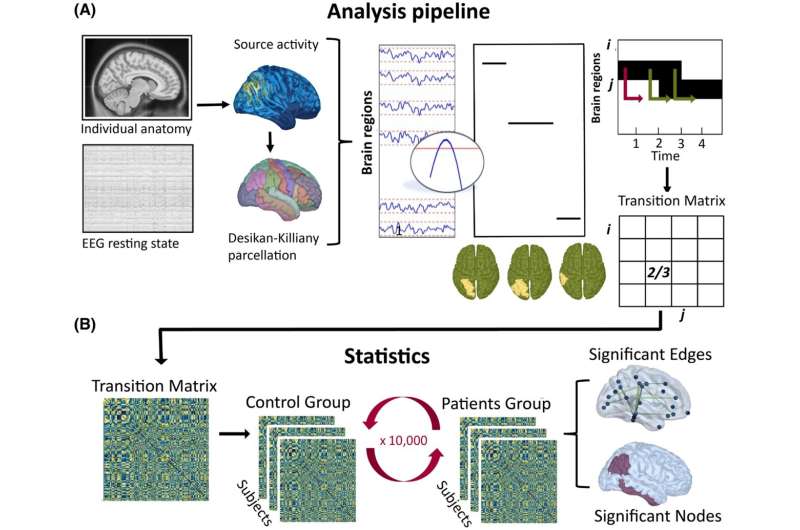This article has been reviewed according to Science X's editorial process and policies. Editors have highlighted the following attributes while ensuring the content's credibility:
fact-checked
peer-reviewed publication
proofread
Altered 'neuronal avalanches' in brains of epilepsy patients tied to cognitive performance

New research by the Human Brain Project has found that in the brains of patients with epilepsy, changes in large scale neuronal activations can be detected in the brain's resting state activity, even when no seizure is ongoing. The non-invasive approach could lead to a new method to aid epilepsy diagnostics.
Diagnosing epilepsy can be problematic for patients, who sometimes have to wear helmets and electrodes for prolonged periods of time waiting for an epileptic episode to happen, so that the clinicians can document it with EEG. Alternatively, the seizure is artificially induced, causing discomfort.
The new findings stem from a collaboration between the Institut de Neurosciences des Systèmes (France), the IRCCS E.Medea—La Nostra Famiglia (Italy) and the Department of General Psychology of Padua University (Italy). Published in the journal Epilepsia, the study has compared high density electroencephalograms (EEG) of 37 patients with temporal lobe epilepsy with healthy controls.
While the brain is at rest, spontaneous waves of neuronal activation are constantly generated. Their function is not fully understood, but they seem to play an important part in brain functionality. The researchers demonstrated that even during resting state it is possible to detect an alteration of the propagation patterns of so-called large-scale "neuronal avalanches," suggesting a potential diagnostic application in epilepsy. These neuronal avalanches are triggered by the spontaneous activation of a group of neurons that then spreads across large areas of the brain, in a cascade effect.
"Our new method is capable of detecting relevant features of epilepsy by simply taking into account the basal functional organization of the brain," explain Gian Marco Duma and Pierpaolo Sorrentino, respectively researchers at IRCCS E.Medea and the Institut de Neurosciences des Systèmes in Marseille, who collaborated on this study. "Even while a seizure is not happening, the brain of a patient with epilepsy presents some alterations in its network dynamics at the whole-brain scale. So we thought it would be possible to examine the dynamics by looking at aperiodical, spontaneous neuronal avalanches."
"We found that the alteration of the spreading of neuronal avalanches in temporal lobe epilepsy is clustered around those brain areas which are fundamental for seizure initiation and diffusion" say Duma and Sorrentino. "This opens up the possibility to a new preliminary diagnostic method, especially important for the difficult cases where scalp EEG fails to detect seizures and additional investigations are necessary."
The results also detected a link between the alteration of the spreading of neuronal avalanche and memory, which is often impaired in patients with epilepsy. The temporal lobe is specifically associated with memorization, and specific patterns of propagation at resting state could be altered by epilepsy. "This finding offers us further evidence of the neurophysiological and neuropsychological relevance of neuronal avalanches," suggest the researchers.
More information: Gian Marco Duma et al, Altered spreading of neuronal avalanches in temporal lobe epilepsy relates to cognitive performance: A resting‐state hdEEG study, Epilepsia (2023). DOI: 10.1111/epi.17551





















